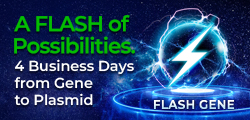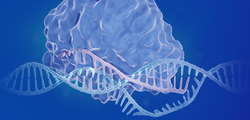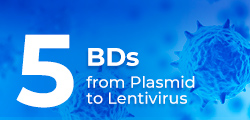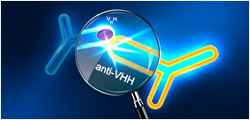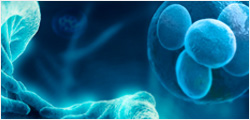-
REAGENT SERVICES
Hot!
-
Most Popular Services
-
Molecular Biology
-
Recombinant Antibody/Protein
-
Reagent Antibody
-
CRISPR Gene Editing
-
DNA Mutant Library
-
IVT RNA and LNP Formulations
-
Oligo Synthesis
-
Peptides
-
Cell Engineering
-
- Gene Synthesis FLASH Gene
- GenBrick™ Up to 200kb
- Gene Fragments Up to 3kb now
- Plasmid DNA Preparation Upgraded
- Cloning and Subcloning
- ORF cDNA Clones
- mRNA Plasmid Solutions New!
- Cell free mRNA Template New!
- AAV Plasmid Solutions New!
- Mutagenesis
- GenCircle™ Double-Stranded DNA New!
- GenSmart™ Online Tools
-
-
PRODUCTS
-
Most Popular Reagents
-
 Instruments
Instruments
-
Antibodies
-
ELISA Kits
-
Protein Electrophoresis and Blotting
-
Protein and Antibody Purification
-
Recombinant Proteins
-
Molecular Biology
-
Stable Cell Lines
-
Cell Isolation and Activation
-
 IVD Raw Materials
IVD Raw Materials
-
 Therapy Applications
Therapy Applications
-
Resources
-
- All Instruments
- Automated Protein and Antibody Purification SystemNew!
- Automated Plasmid MaxiprepHot!
- Automated Plasmid/Protein/Antibody Mini-scale Purification
- eBlot™ Protein Transfer System
- eStain™ Protein Staining System
- eZwest™ Lite Automated Western Blotting Device
- CytoSinct™ 1000 Cell Isolation Instrument
-
- Pharmacokinetics and Immunogenicity ELISA Kits
- Viral Titration QC ELISA Kits
- -- Lentivirus Titer p24 ELISA KitHot!
- -- MuLV Titer p30 ELISA KitNew!
- -- AAV2 and AAVX Titer Capsid ELISA Kits
- Residual Detection ELISA Kits
- -- T7 RNA Polymerase ELISA KitNew!
- -- BSA ELISA Kit, 2G
- -- Cas9 ELISA KitHot!
- -- Protein A ELISA KitHot!
- -- His tagged protein detection & purification
- dsRNA ELISA Kit
- Endonuclease ELISA Kit
- COVID-19 Detection cPass™ Technology Kits
-
- Automated Maxi-Plasmid PurificationHot!
- Automated Mini-Plasmid PurificationNew!
- PCR Reagents
- S.marcescens Nuclease Benz-Neburase™
- DNA Assembly GenBuilder™
- Cas9 / Cas12a / Cas13a Nucleases
- Base and Prime Editing Nucleases
- GMP Cas9 Nucleases
- CRISPR sgRNA Synthesis
- HDR Knock-in Template
- CRISPR Gene Editing Kits and Antibodies
-
![AmMag™ Quatro Automated Plasmid Purification]() AmMag™ Quatro automated plasmid purification
AmMag™ Quatro automated plasmid purification
-
![Anti-Camelid VHH]() MonoRab™ Anti-VHH Antibodies
MonoRab™ Anti-VHH Antibodies
-
![ELISA Kits]() ELISA Kits
ELISA Kits
-
![Precast Gels]() SurePAGE™ Precast Gels
SurePAGE™ Precast Gels
-
![Quatro ProAb Automated Protein and Antibody Purification System]() AmMag™ Quatro ProAb Automated Protein and Antibody Purification System
AmMag™ Quatro ProAb Automated Protein and Antibody Purification System
-
![Target Proteins]() Target Proteins
Target Proteins
-
![AmMag™ Quatro Automated Plasmid Purification]() AmMag™ Quatro automated plasmid purification
AmMag™ Quatro automated plasmid purification
-
![Stable Cell Lines]() Stable Cell Lines
Stable Cell Lines
-
![Cell Isolation and Activation]() Cell Isolation and Activation
Cell Isolation and Activation
-
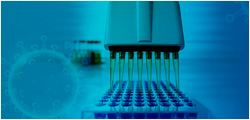 IVD Raw Materials
IVD Raw Materials
-
![Quick
Order]() Quick Order
Quick Order
-
![Quick
Order]() Quick Order
Quick Order
- APPLICATIONS
- RESOURCES
- ABOUT US
- SIGN IN My Account SIGN OUT
- REGISTER
Resources » Weekly Scientific Insight » GenCircle for Gene Therapy
scott.pritchett
How Is a Small DNA Circle Revolutionizing Gene Therapy?

Editor: Fan Zhou
November 7, 2024
Plasmids, circular extrachromosomal DNA molecules originally obtained from bacteria, are the most widely used DNA-based vectors for gene delivery. In the correction of genetic defects and the prevention or treatment of infectious diseases and cancer, plasmid DNA continues to show promising potential and has gained increasing attention over the past few decades. Plasmid DNA offer several advantages over viral vectors or other nucleic acid platforms, such as ease of design and manufacturing, low production cost, and high stability for transportation and long-term storage.
Disadvantages of Conventional Plasmids
However, the delivery efficiency of non-viral vectors is typically lower than that of viral-based delivery, and transgene expression persistence is poor, limiting the development of plasmid-based gene therapeutics. Therefore, improving current plasmid vector systems to enhance their delivery efficiency is crucial.
Additionally, antibiotic selection markers and complicated, lengthy vector backbones increase the biosafety risk of conventional plasmids. The antibiotic resistance genes in plasmid vectors are at risk of being taken up by bacteria in the human microbiome and potentially entering the environment, a concern raised by regulatory bodies such as the Food and Drug Administration (FDA) and the European Medicines Agency (EMA). Bacterial sequences in the plasmid backbone are also more likely to be methylated by the E. coli host, potentially triggering severe immune responses and increasing the likelihood of transcriptional silencing.
Common Antibiotic-Free Selection Systems
1. Toxin-Antitoxin Systems
Many toxin-antitoxin (TA) systems, such as CcdAB and Hok-Sok, have proven to be effective alternatives to antibiotic resistance genes. These systems contain an inducible toxin in E.coli’s genome and an antitoxin encoded in a plasmid that can be acquired by the host cell through transformation. Plasmids carrying the antitoxin-encoding gene allow their bacterial host to survive when the toxin is induced to be expressed. When the plasmid is lost from the cell, the antitoxin is rapidly degraded, leaving the toxin behind to kill the cell.
Another TA system is based on RNA/RNA interaction, which uses RNA antisense regulators to repress toxin gene expression encoded in the E. coli host strain. The toxin gene, a counter-selectable marker SacB, encodes levansucrase, which converts sucrose into a toxic metabolite in gram-negative bacteria. The antitoxin, a 150 bp RNA-OUT antisense RNA, is encoded on the plasmid backbone to enable plasmid selection.
TA systems replace the need for antibiotic markers and enable the scalable manufacturing of circular DNA molecules. However, the potential safety risks of antitoxin gene transcription or expression must be carefully evaluated when applied in therapeutic development.
2. Minicircle system
Minicircles are double-stranded, supercoiled expression cassettes that lack a bacterial plasmid DNA (pDNA) backbone. They are generated in E. coli through recombination between two recombinase target sites flanking a eukaryotic expression unit. This process generates the desired minicircle along with a ‘miniplasmid’ containing an undesired antibiotic resistance gene and a bacterial origin of replication. Different strategies for minicircle generation exist, such as using the integrase from Streptomyces phage phiC31.
The reduced plasmid backbone in minicircles has been reported to enhance transgene expression compared to conventional plasmids. However, the production of minicircles is labor-intensive, and further development is needed to improve control over impurities and scalability.
How GenCircleTM dsDNA is Transforming Gene and Cell Therapy
The GenCircle platform, a novel, small circular double stranded DNA vector from GenScript, offers a revolutionary platform that eliminates the use of antibiotic resistance genes while avoiding the shortcomings of other antibiotic-free systems. The GenCircle manufacturing process eliminates most of the plasmid backbone and only retains the replication origin. This design enables GenCircle dsDNA to perform more efficiently in downstream applications and exhibit a superior scalability compared to traditional plasmids.
Improving Delivery Efficiency
Smaller plasmids with higher levels of supercoiling increase LNP encapsulation and delivery efficiency. For example, a 2 kb expression cassette in GenCircle saves half the plasmid size compared to conventional plasmids (which typically have a backbone larger than 2kb). This results in lower dosages, less toxicity, and improved LNP encapsulation and delivery efficiency.
These advantages have been demonstrated in both cell and animal assays. In an in vitro assay, a CMV-GFP-polyA was transferred to HepG2 cells using both LNP-formulated GenCircle and LNP-formulated conventional plasmid (pcDNA3.1, widely used for transgene expression). At the same dosage, LNP-formulated GenCircle achieved nearly 20 times the expression level of the conventional plasmid, far exceeding the effect of molecular copy number differences. The data was collected 48 hours post-transfection.



Figure 1. CMV-GFP-polyA expression in HepG2 cell assay using GenCircle-LNP vs. plasmid-LNP.
In an in vivo assay, the CMV-luciferase-polyA cassette was encoded in both GenCircle and pcDNA3.1 and formulated with LNP. Expression levels were measured by luciferin luminescence intensity. Consistent with the in vitro results, the luciferase expression level of LNP-GenCircle was much higher than that of LNP-Plasmid. Moreover, gene expression persisted for several weeks. GenCircle’s backbone, only 429bp long and devoid of any bacterial or CpG island sequences, likely contributes to reduced immune responses and helps the DNA avoid degradation.

Figure 2. In vivo CMV-GFP-polyA expression using GenCircle-LNP vs. plasmid-LNP , measured by luciferin luminescence intensity.
Enhancing Manufacturing Control
As DNA drugs or raw materials of cell therapeutics, the production of novel plasmid DNA must be strictly controlled, with highly refined GMP production processes. Higher yields are necessary for gene therapy applications, as large amounts of DNA are required. Additionally, higher unit yield typically results in lower impurity levels. The GenCircle platform offers up to grams per liter of upstream yields and perfectly matches the mature downstream processes of traditional plasmids. This simplifies the IND filing process, and the absence of antibiotic markers reduces regulatory concerns.

Figure 3. The GenCircle platform host strain GenCCts and optimized process significantly improve plasmid yields. Up to 1.6g/L of GenCircle DNA yield has been achieved at the fermentation terminal, which is 3-5 times higher than a typical E.coli strain.
Learn more about our RUO to cGMP GenCircle circular dsDNA here.
Subscribe to have the latest weekly scientific insights delivery to your inbox!
* We'll never share your email address with a third-party.

-
